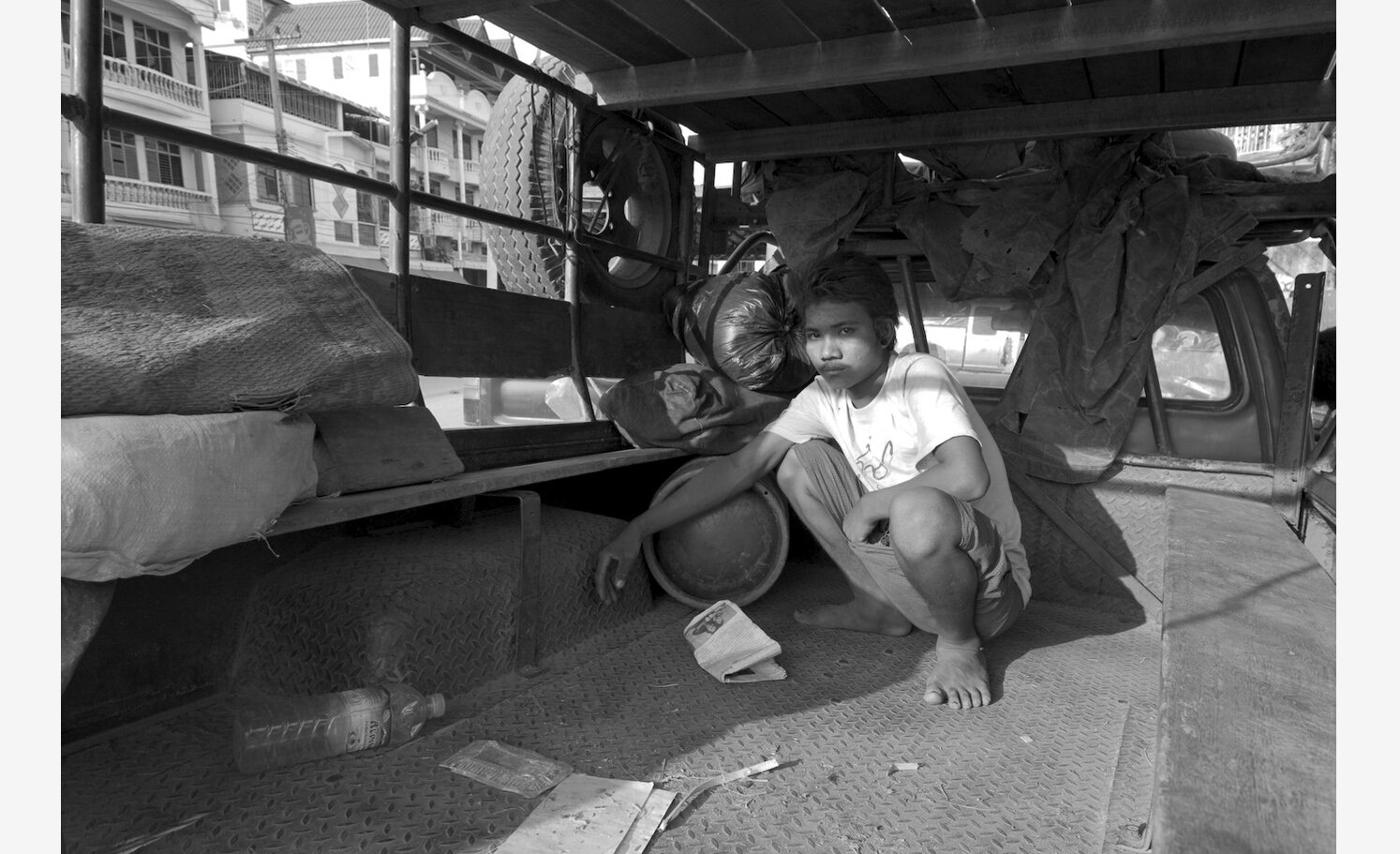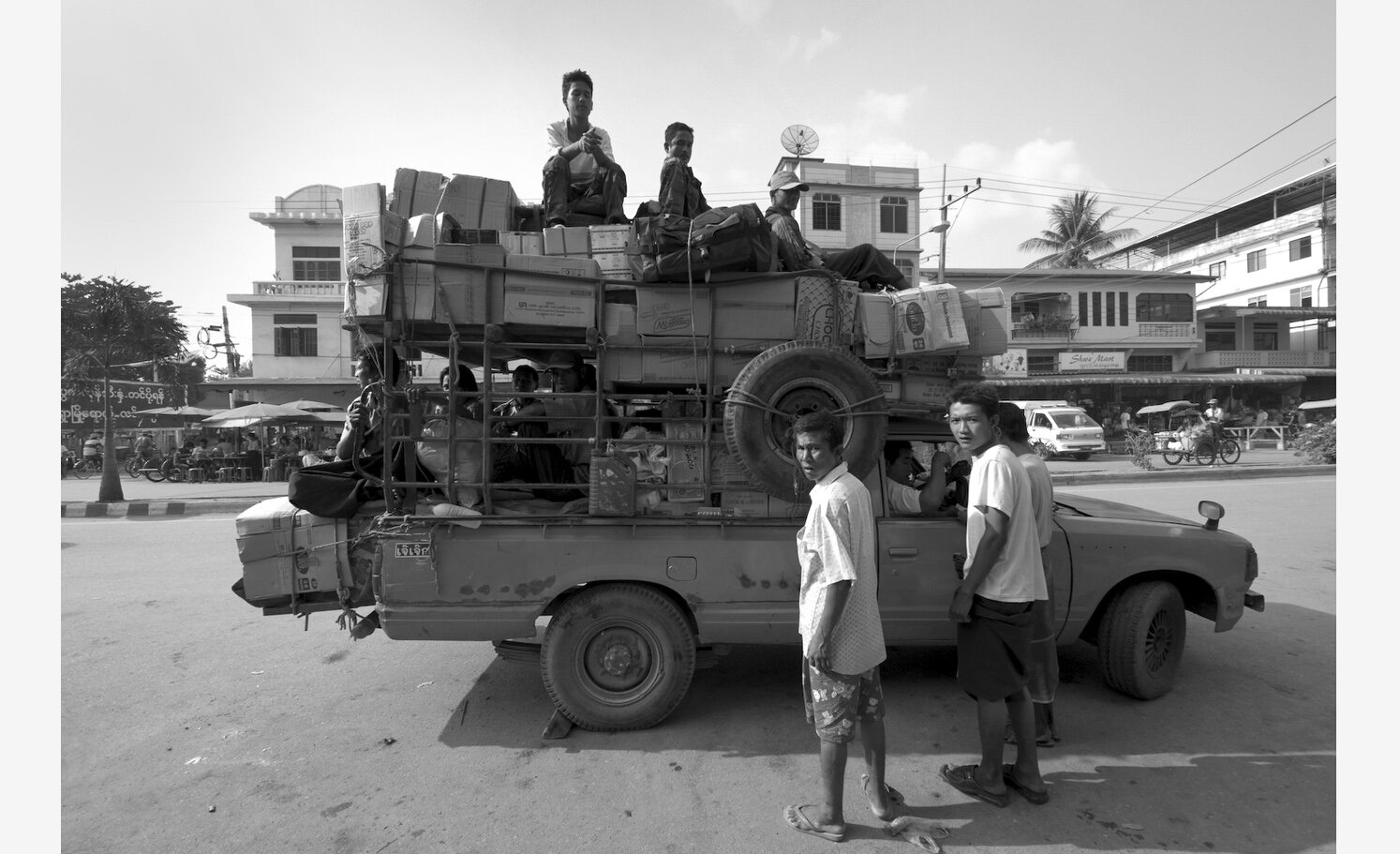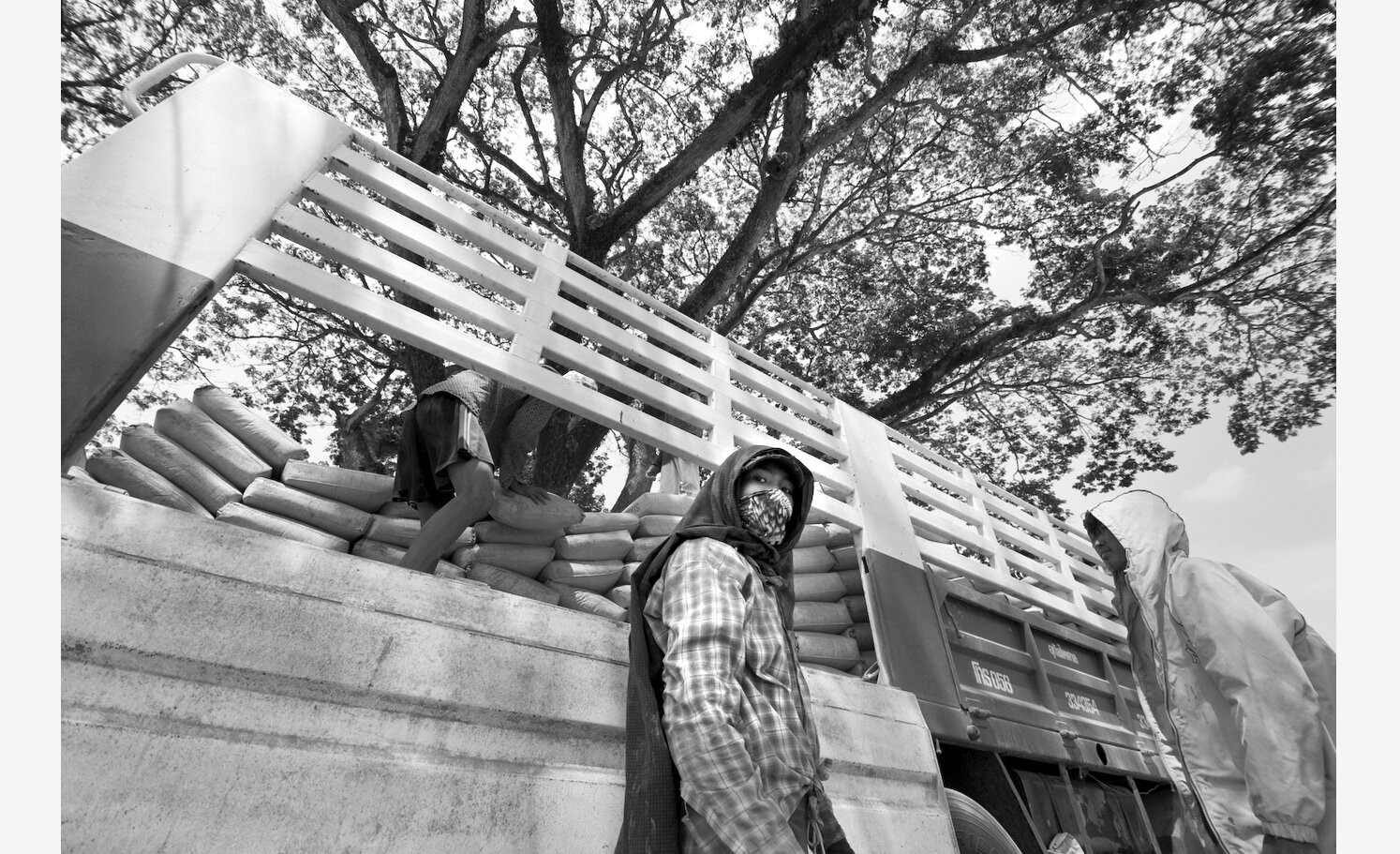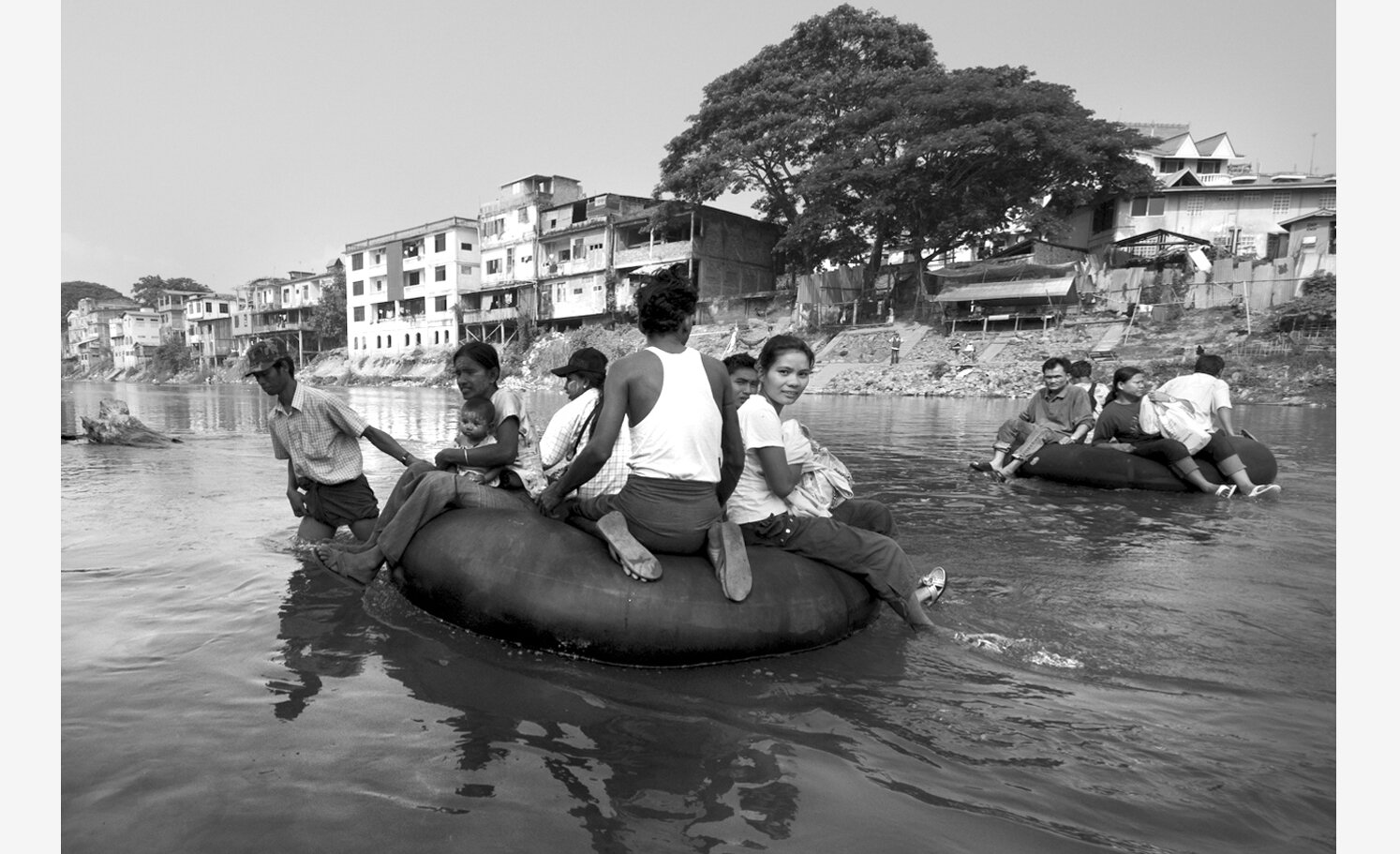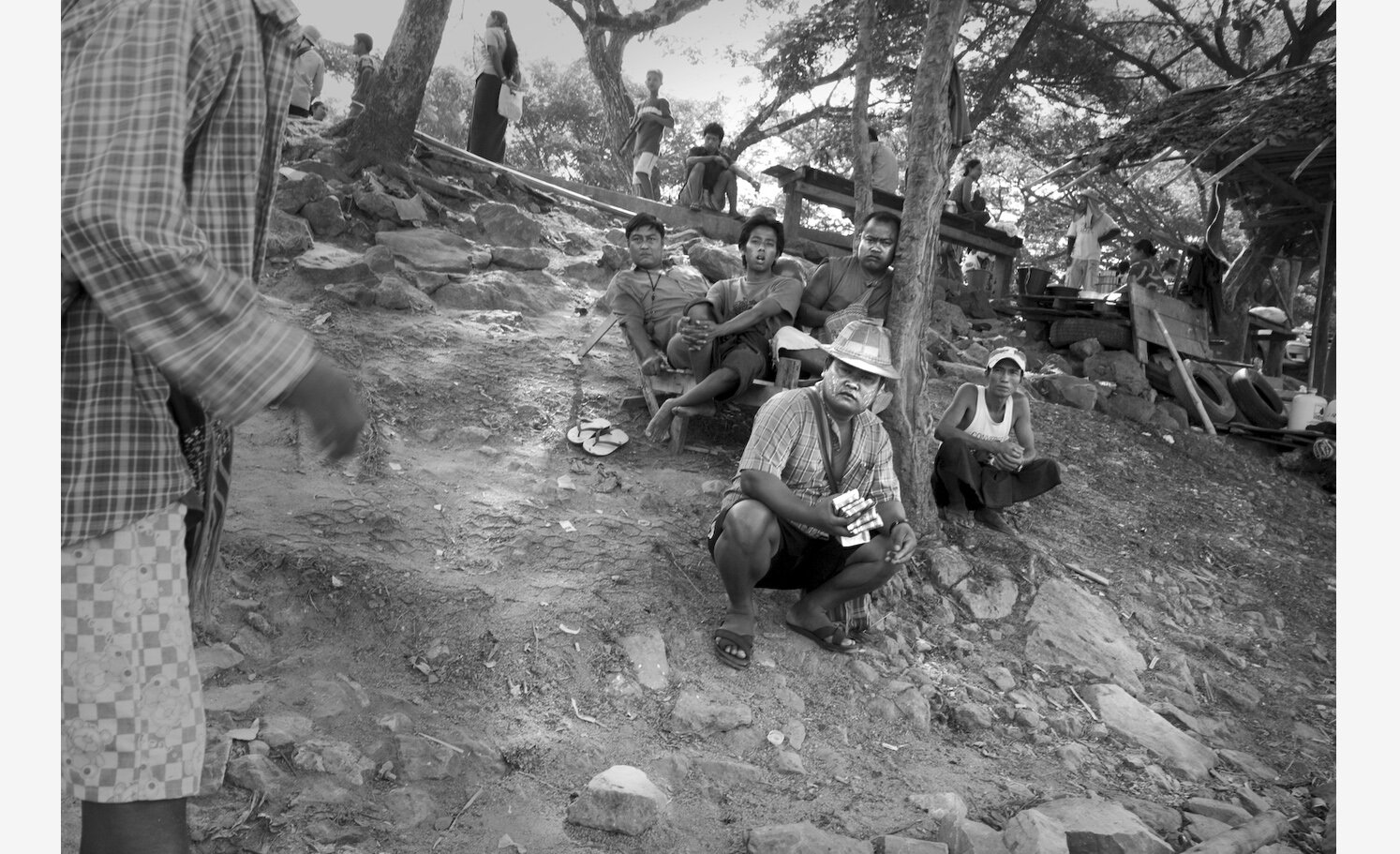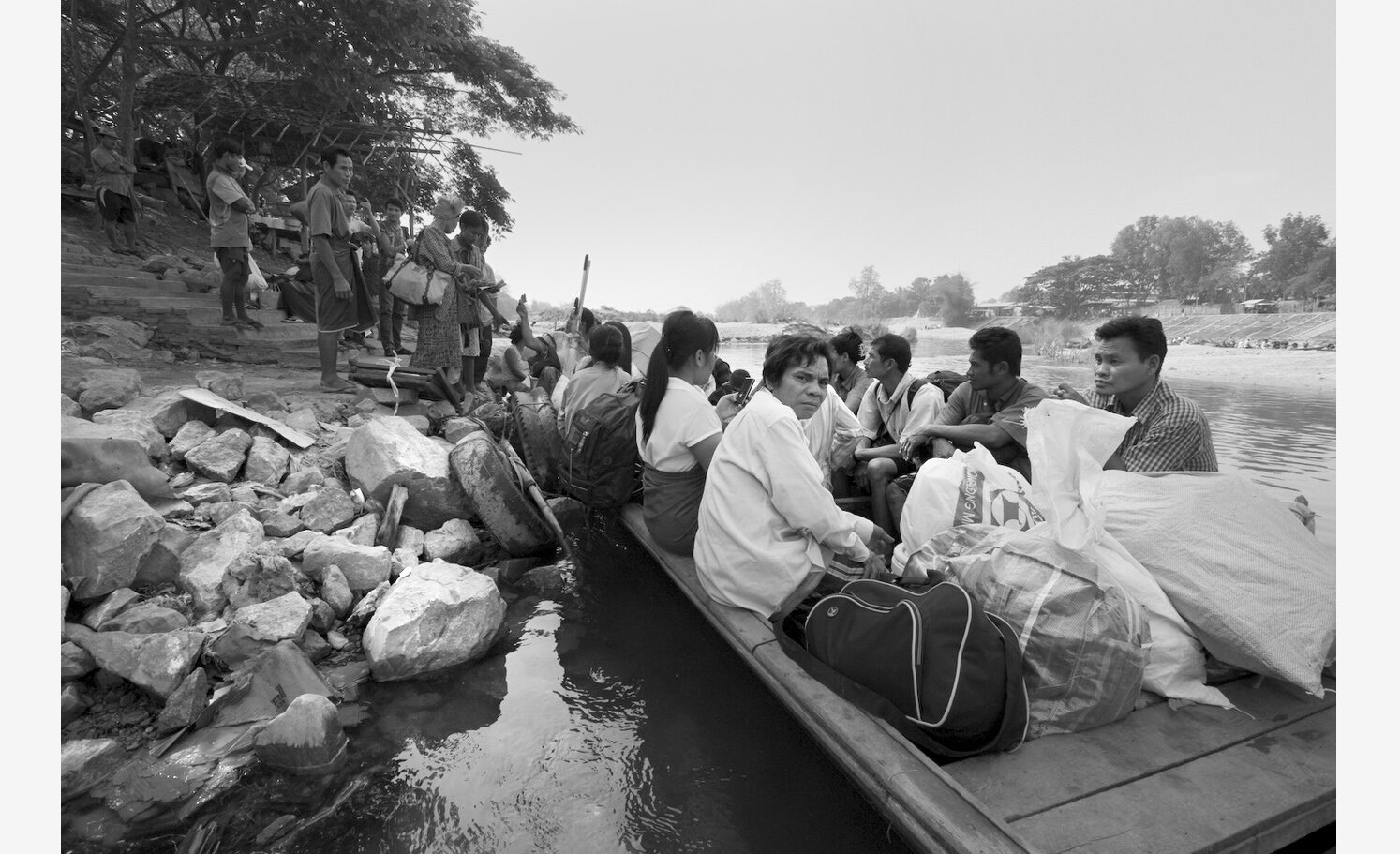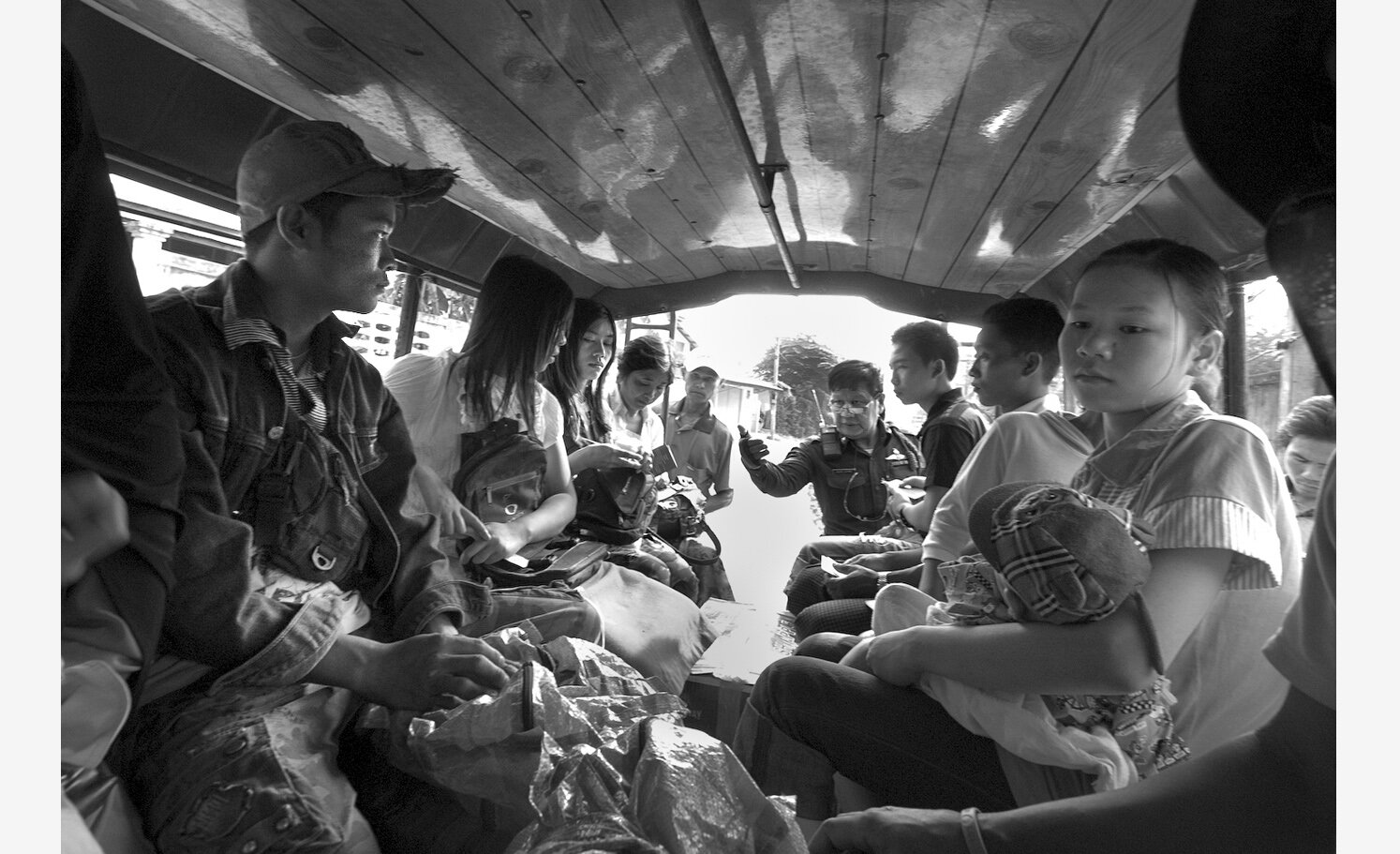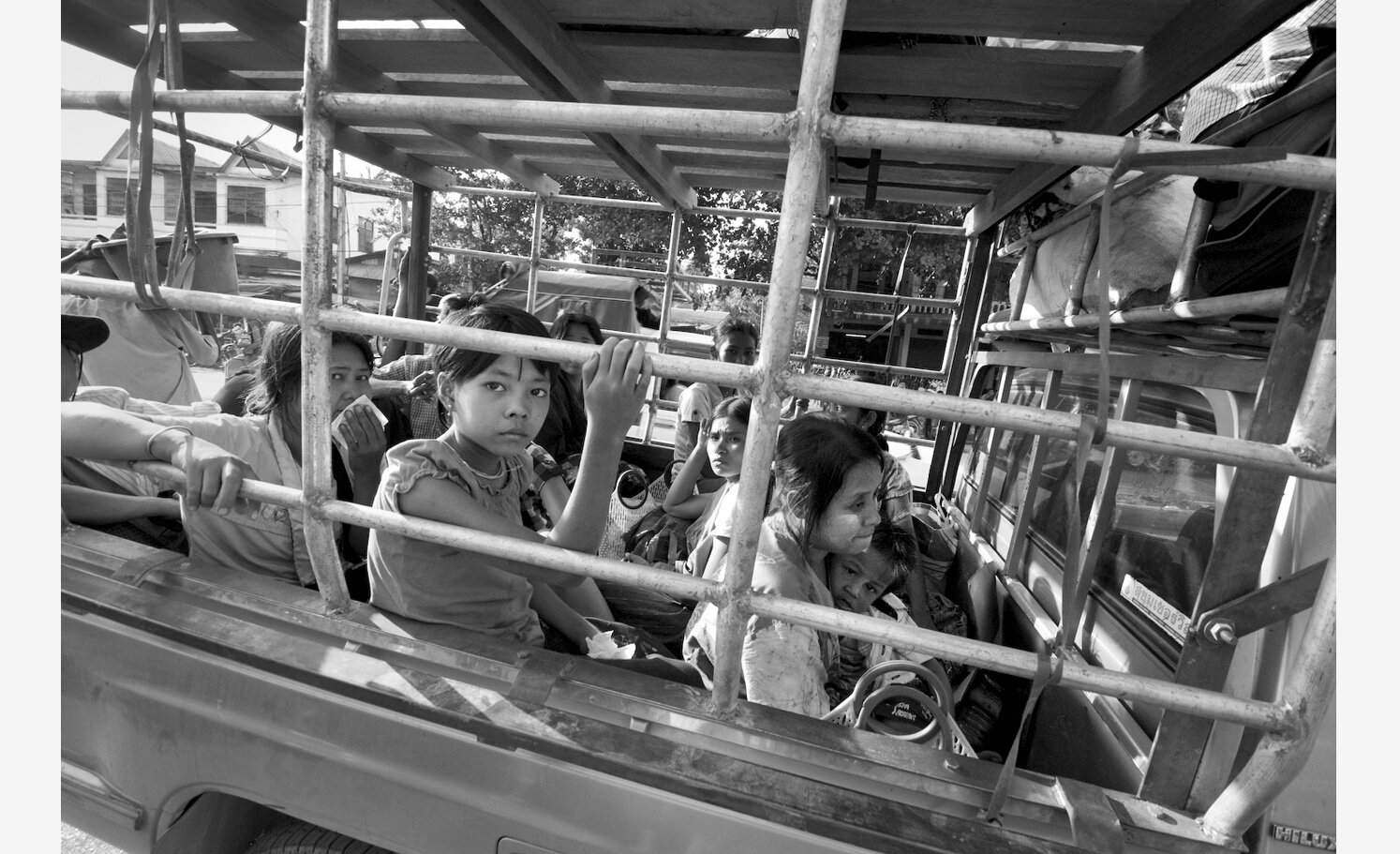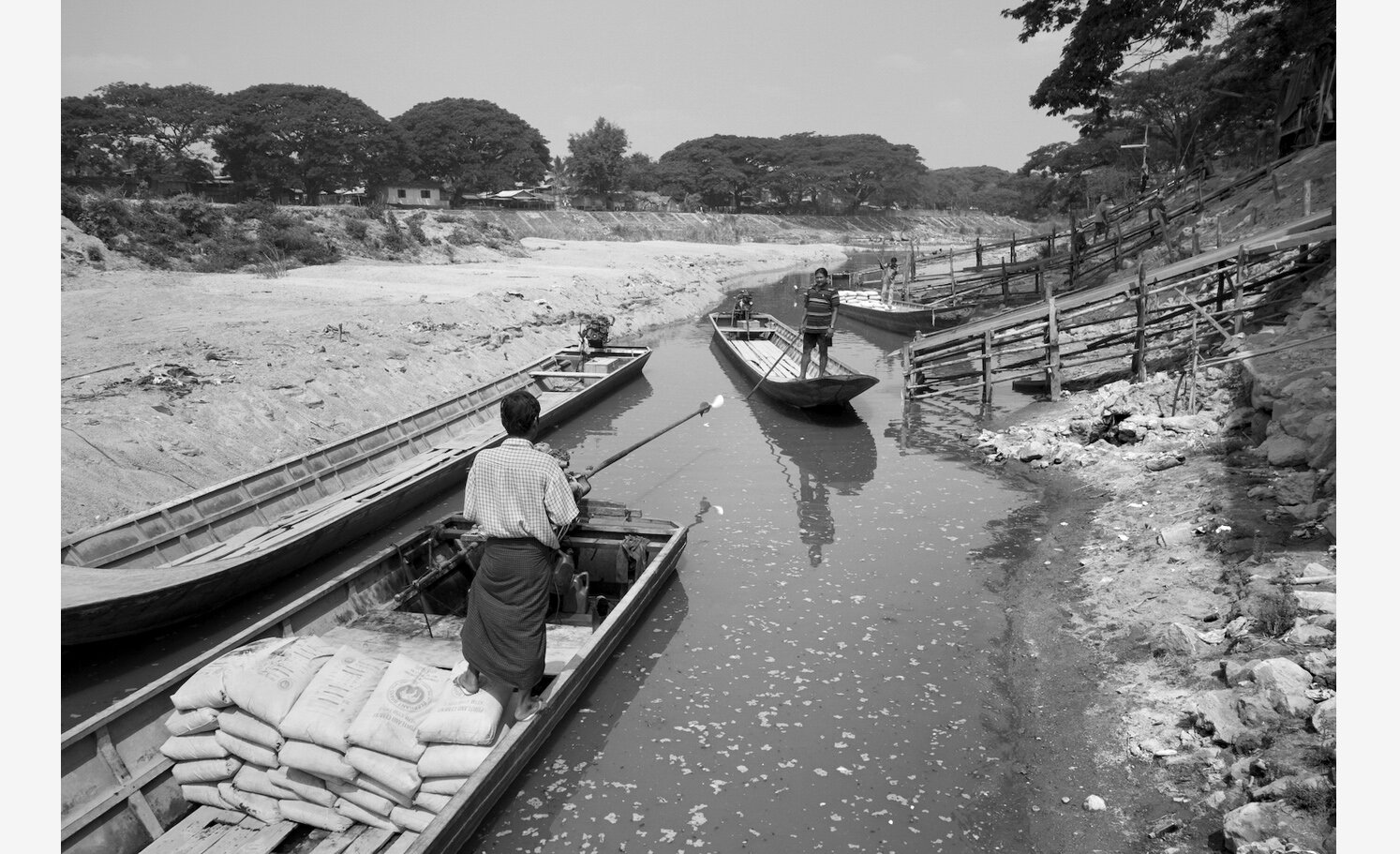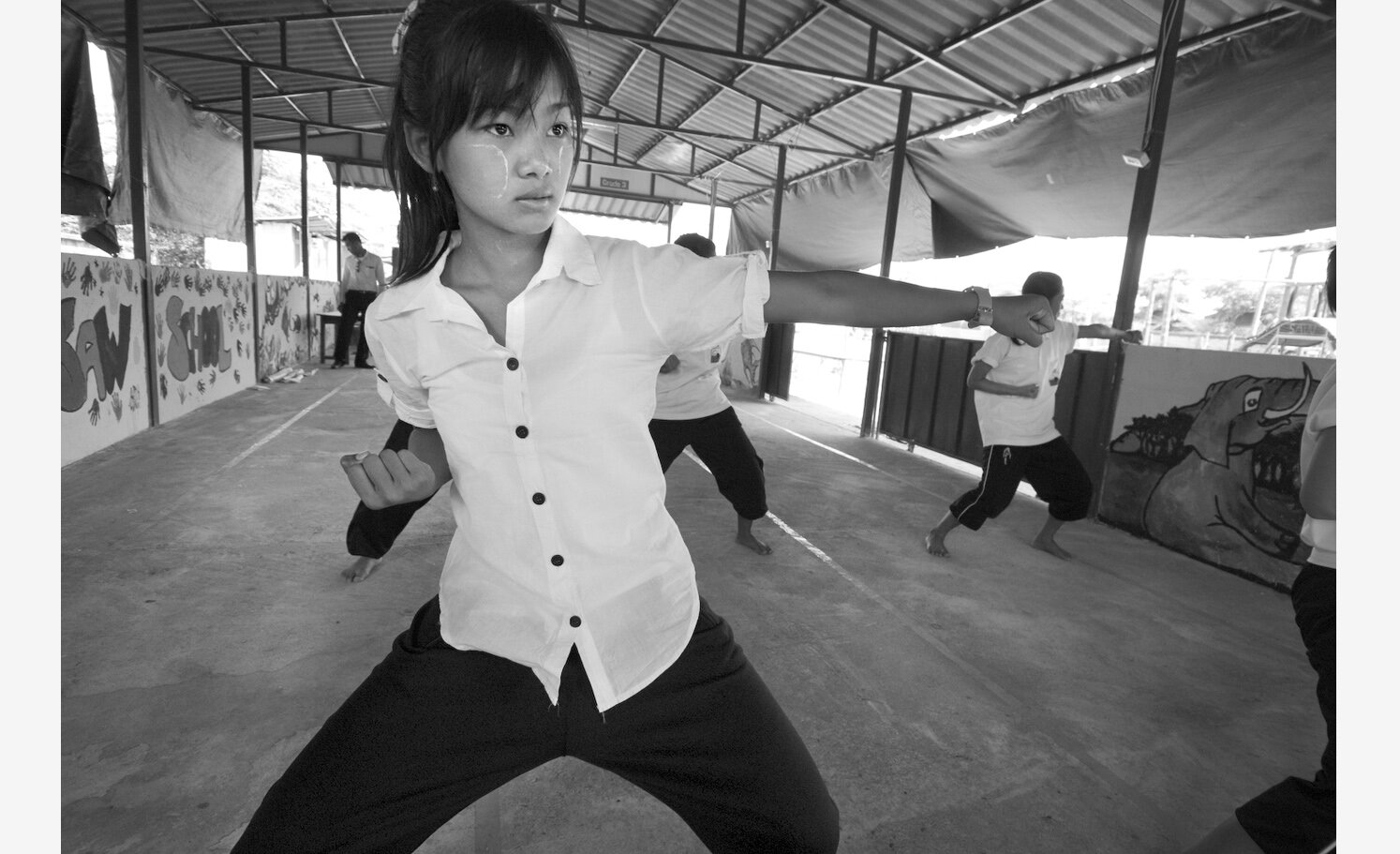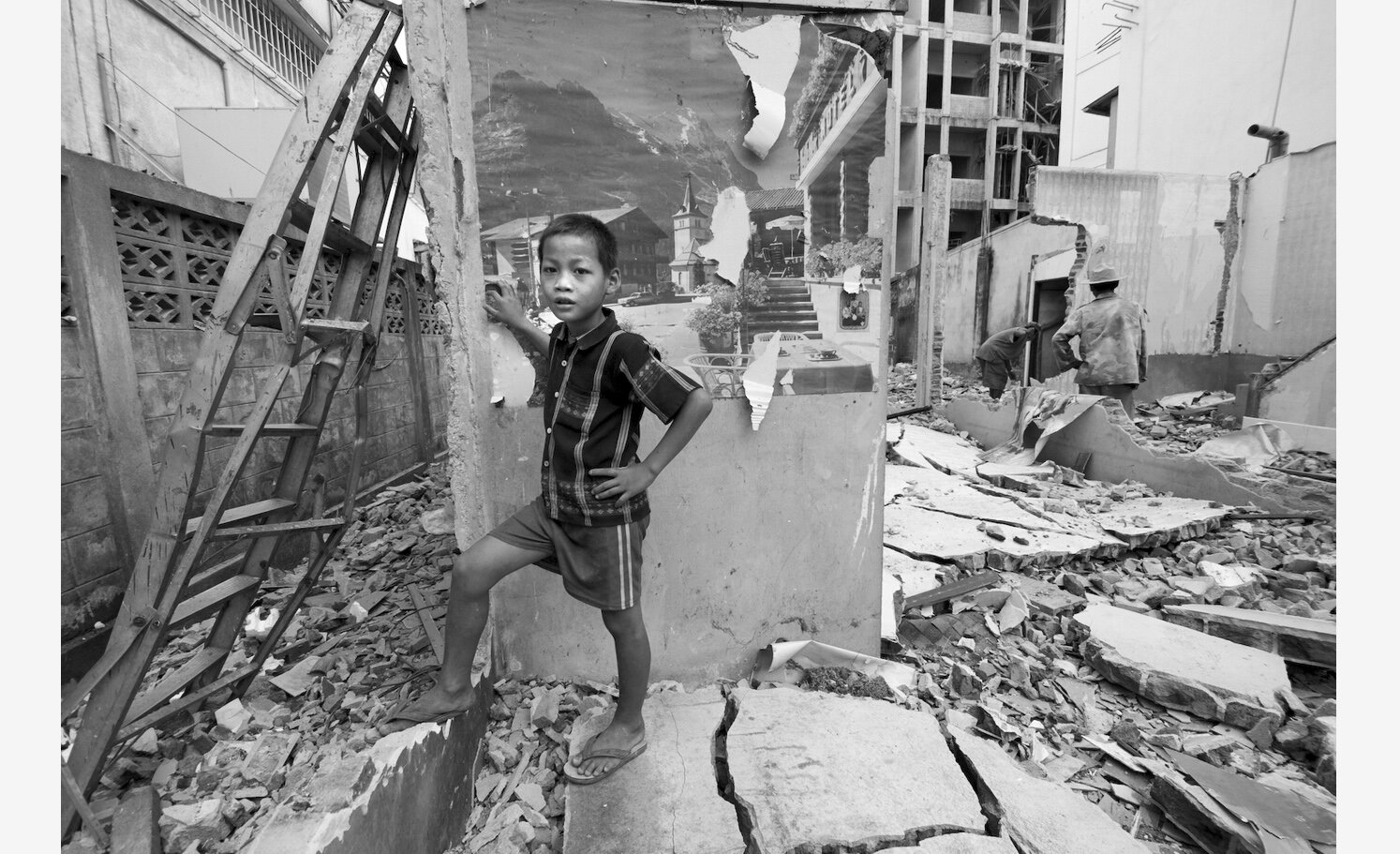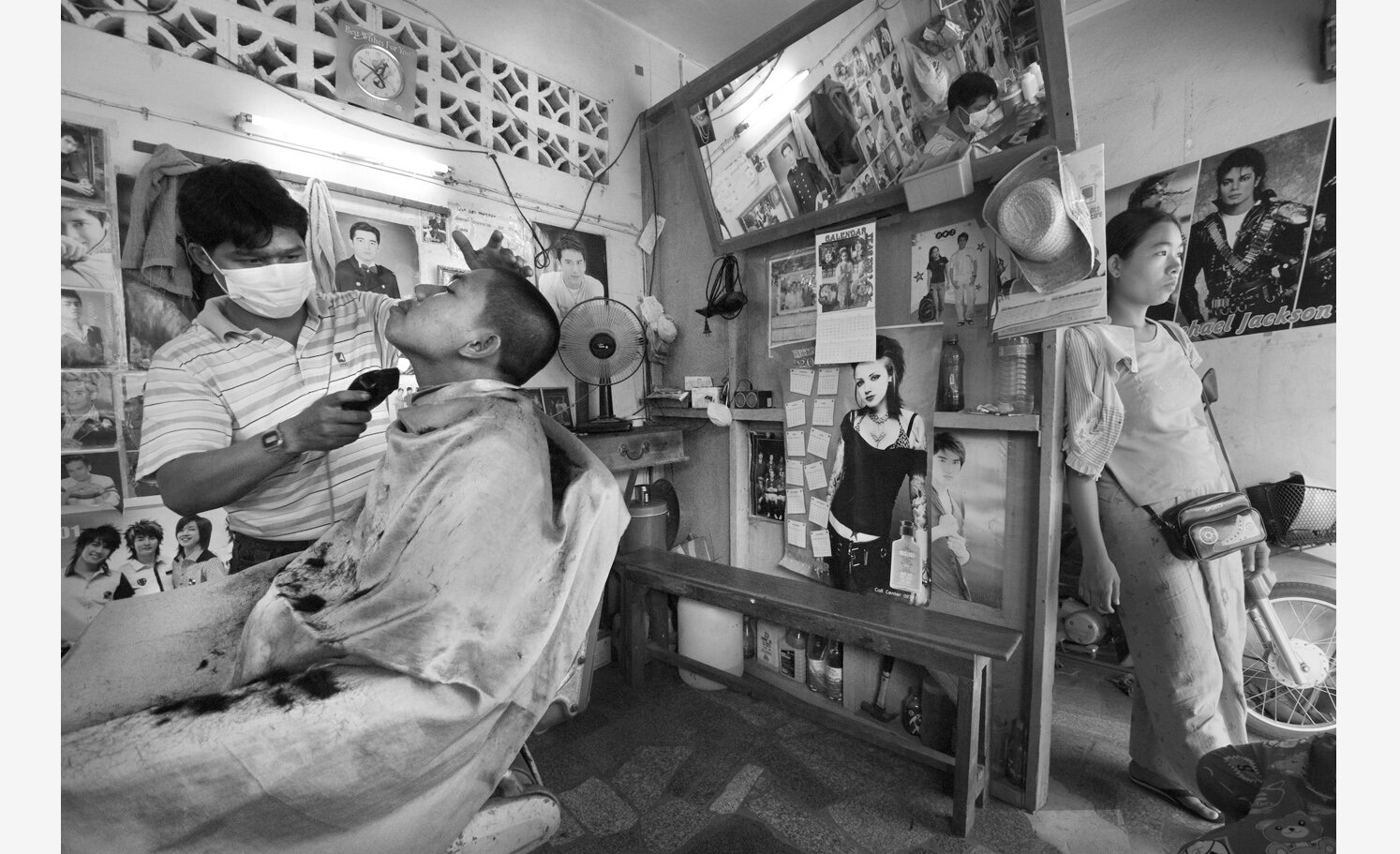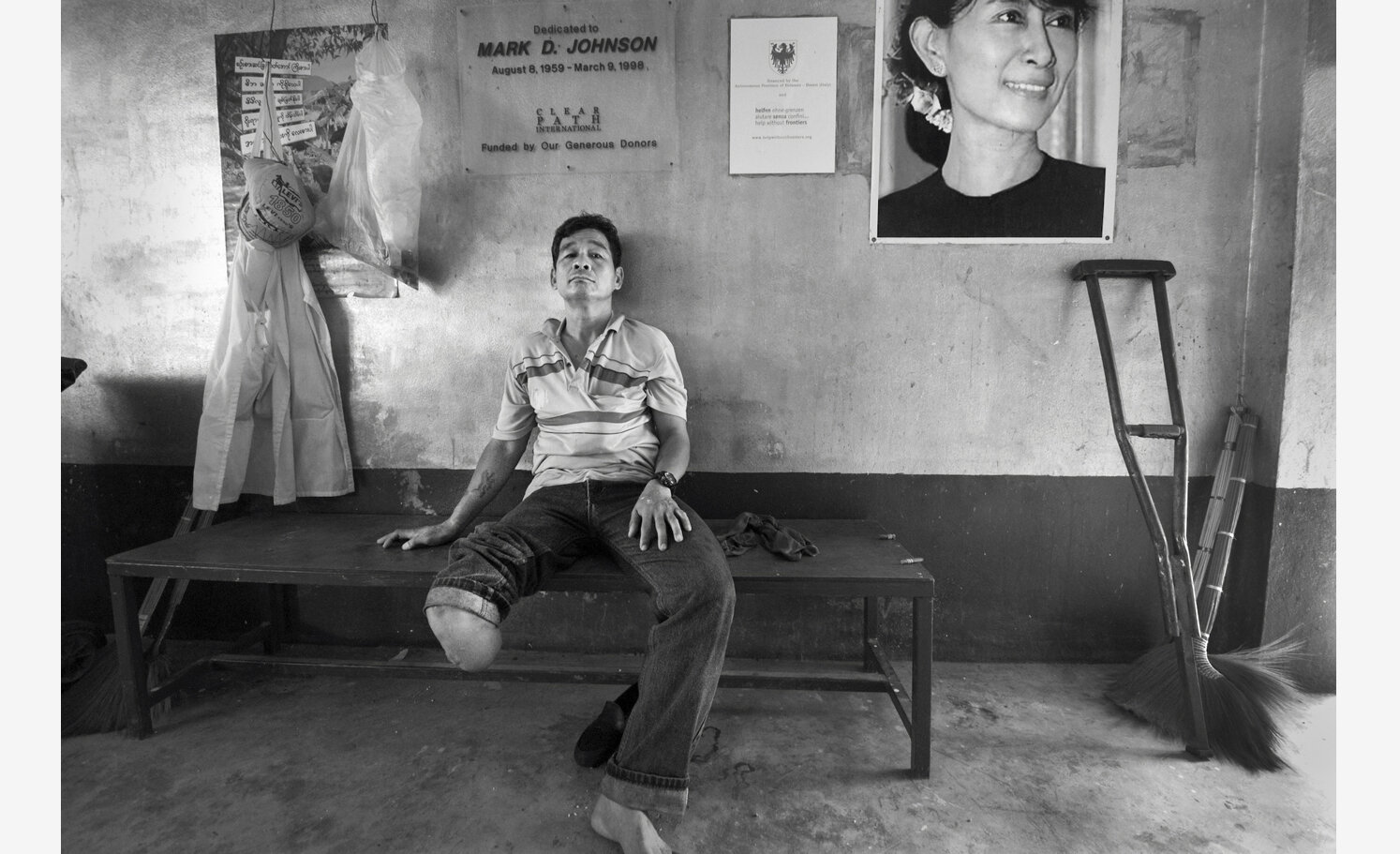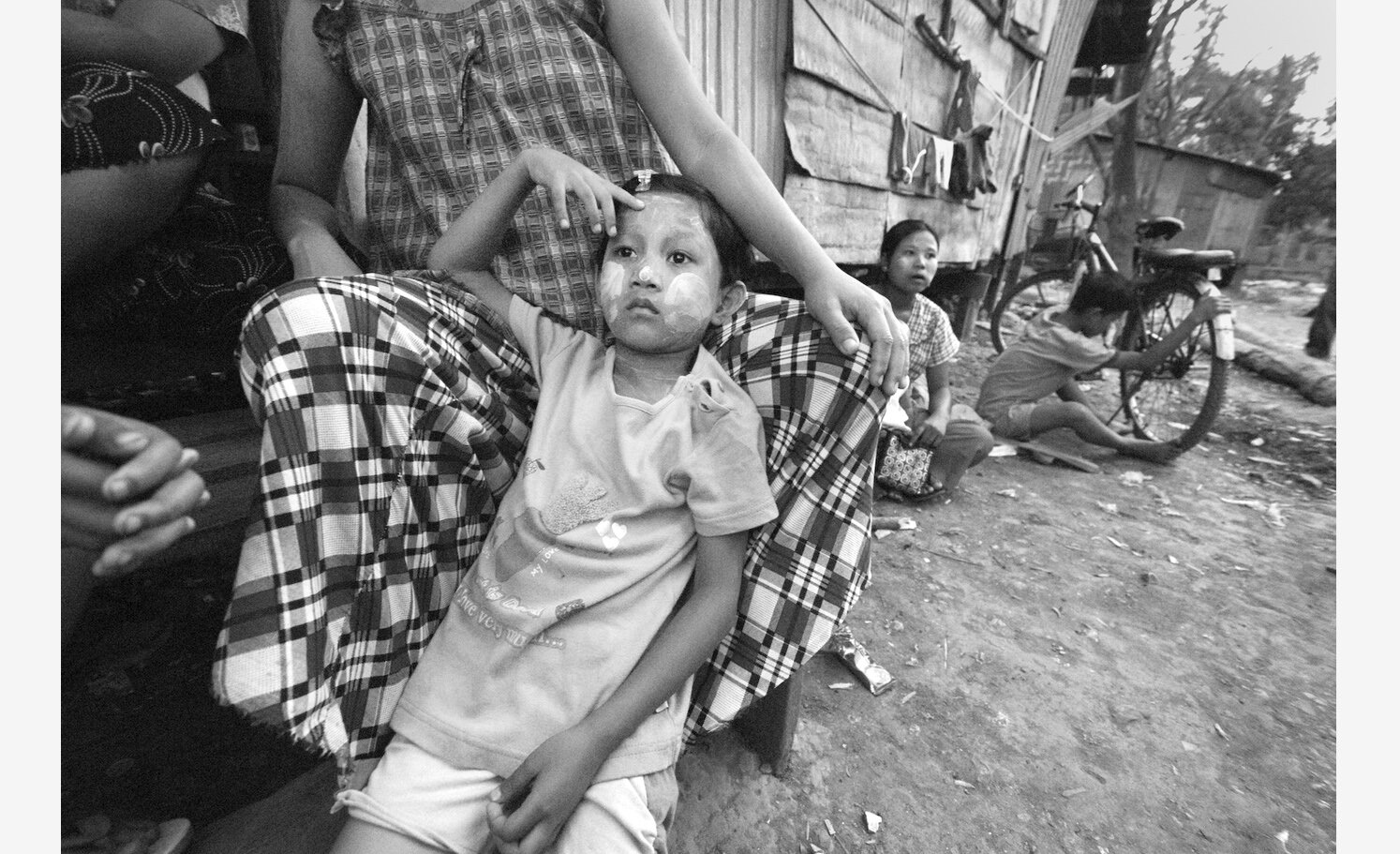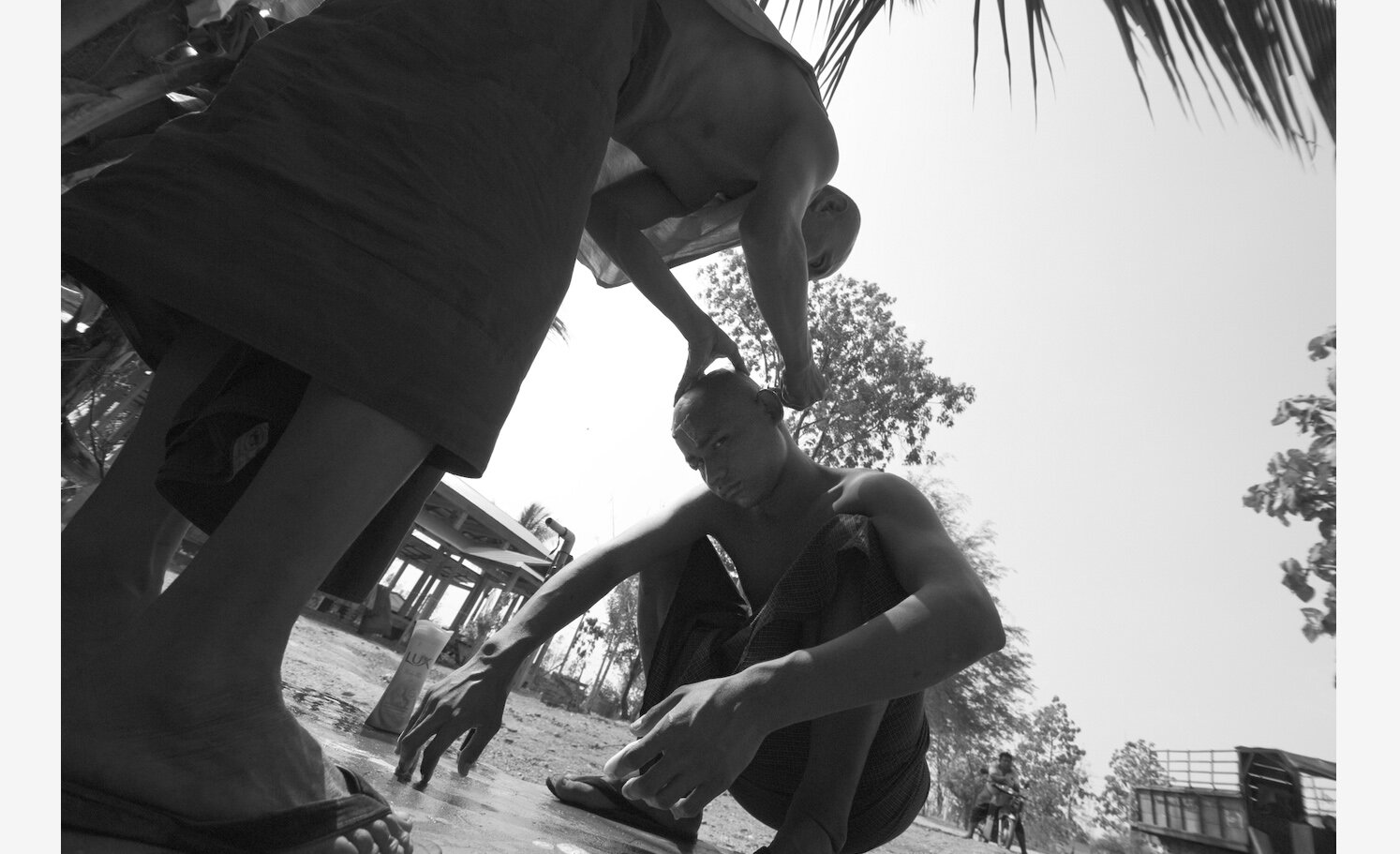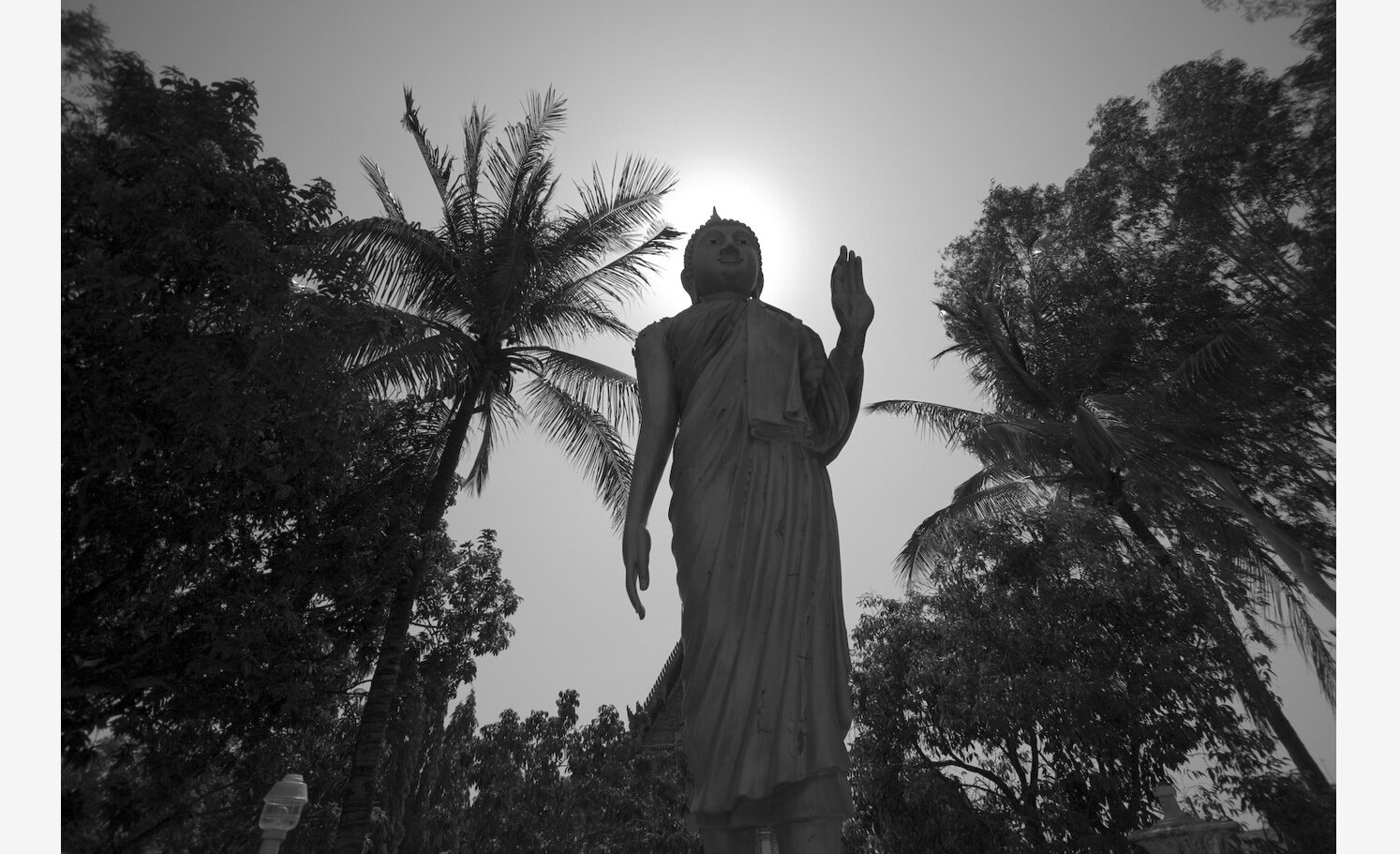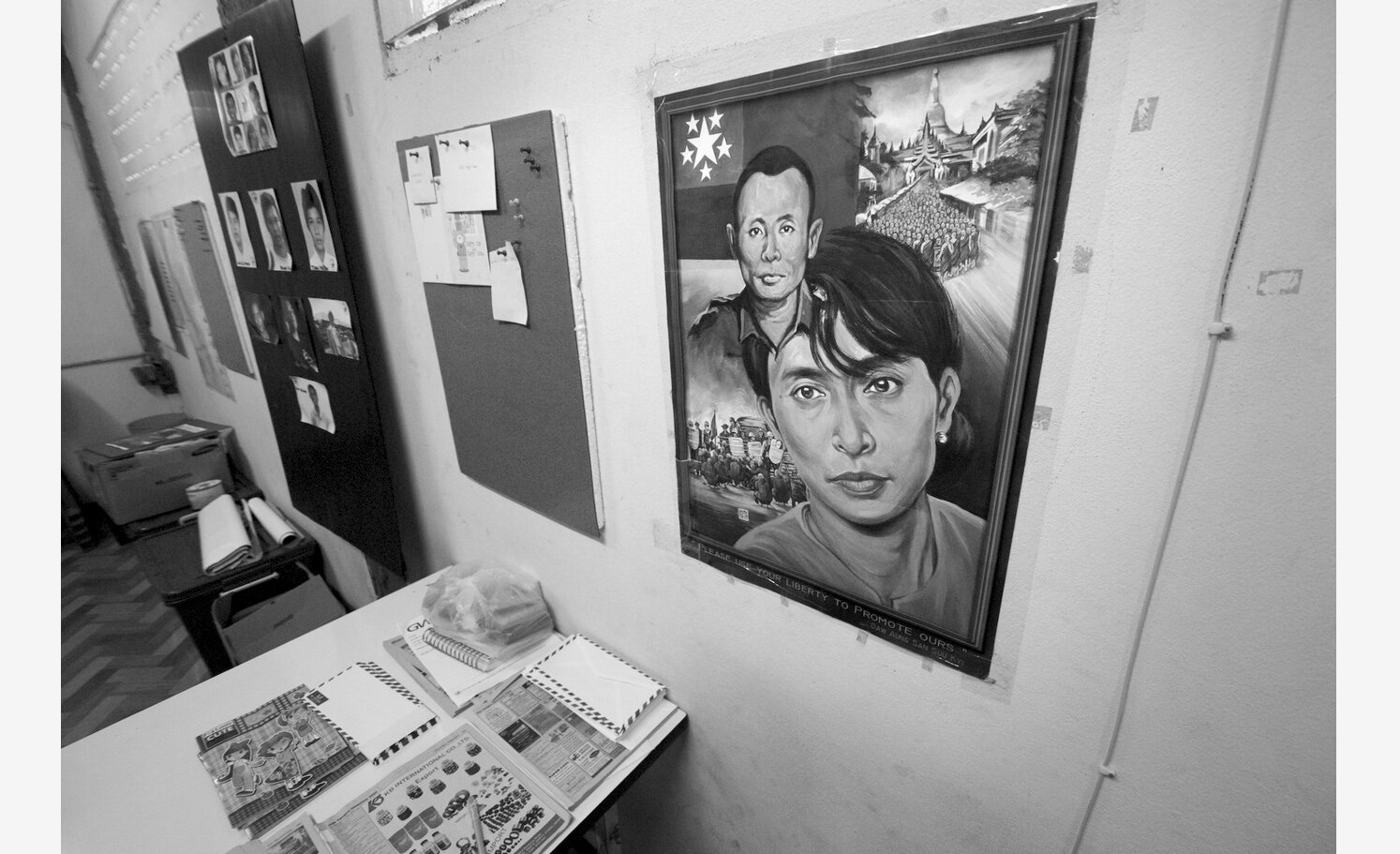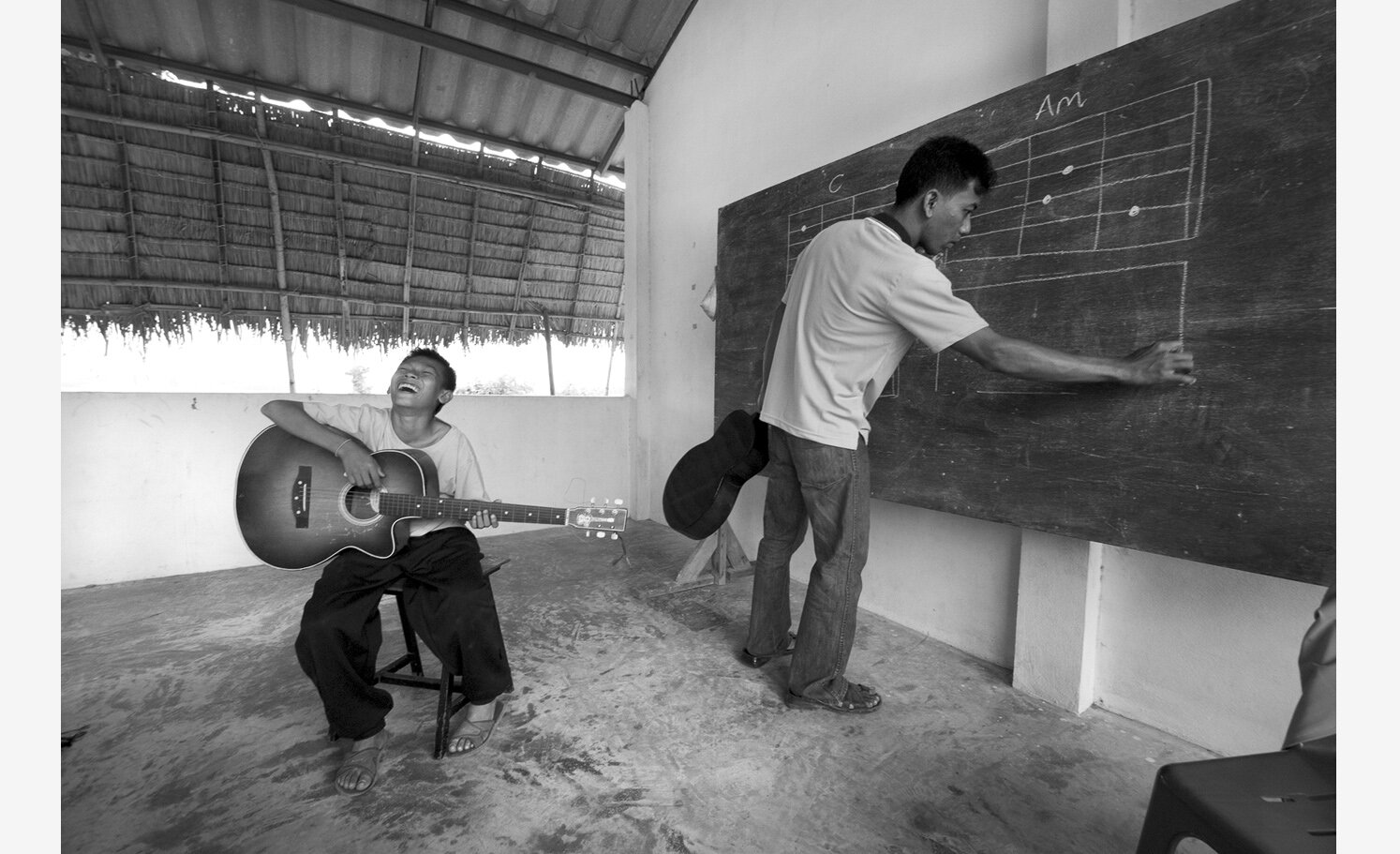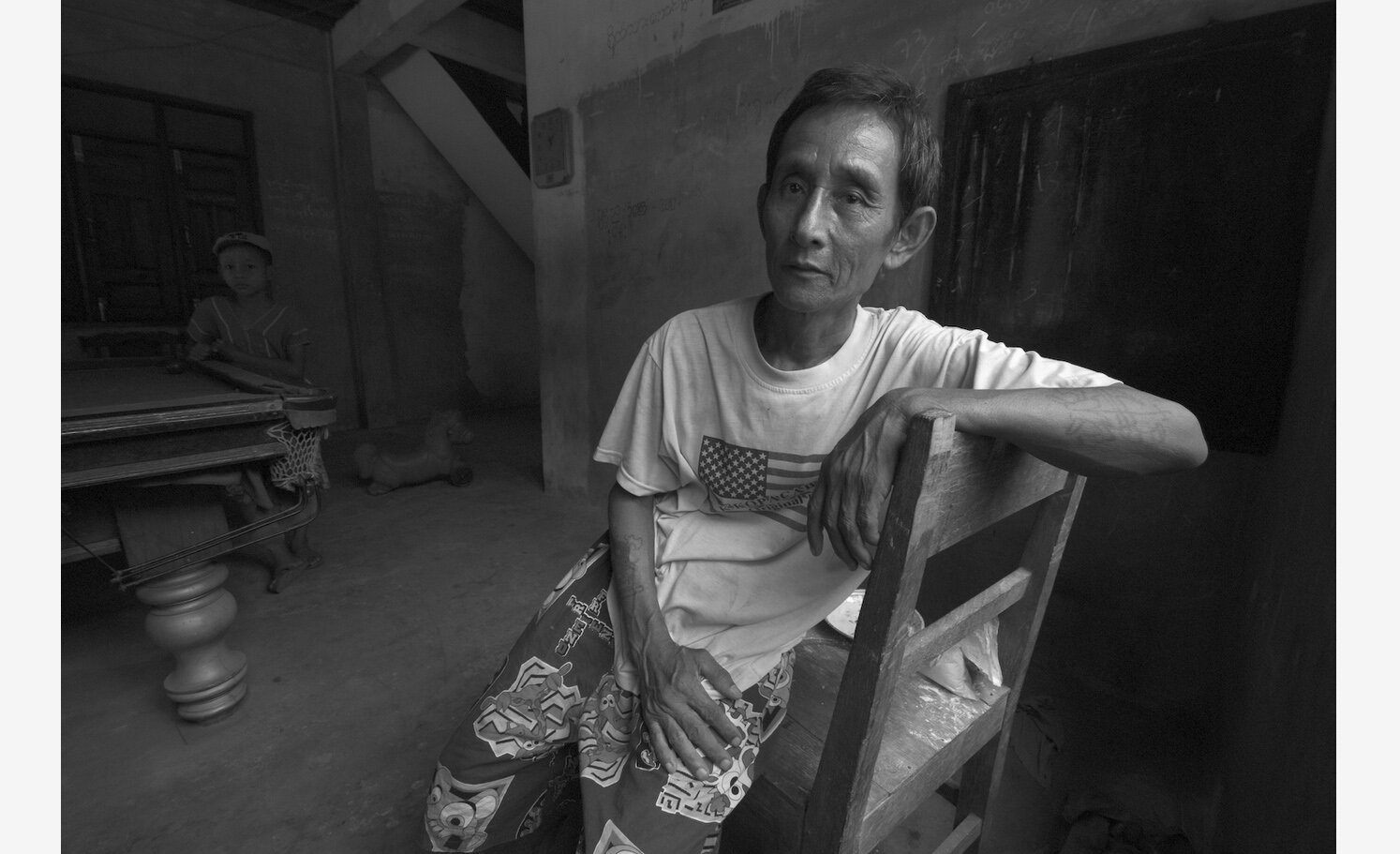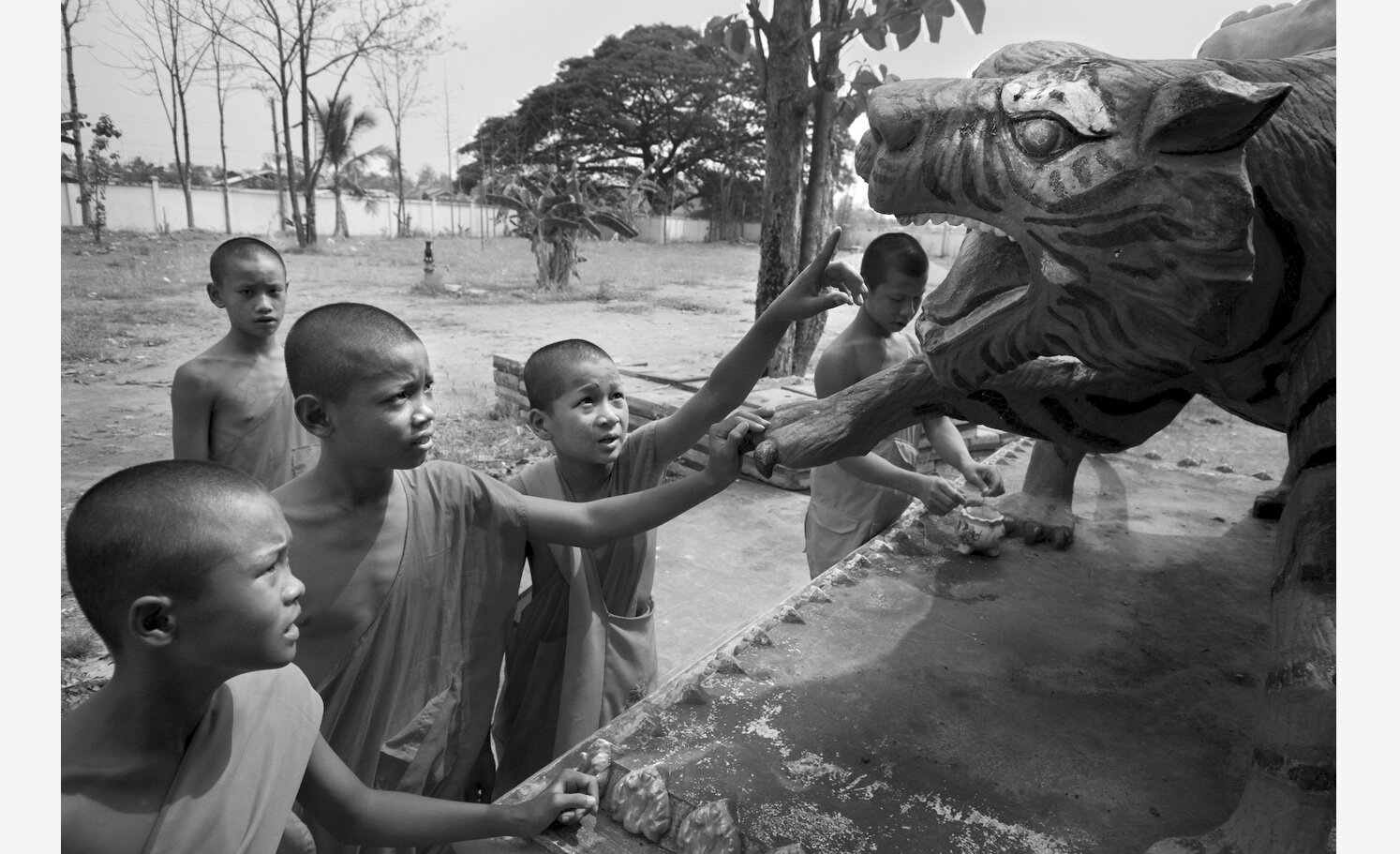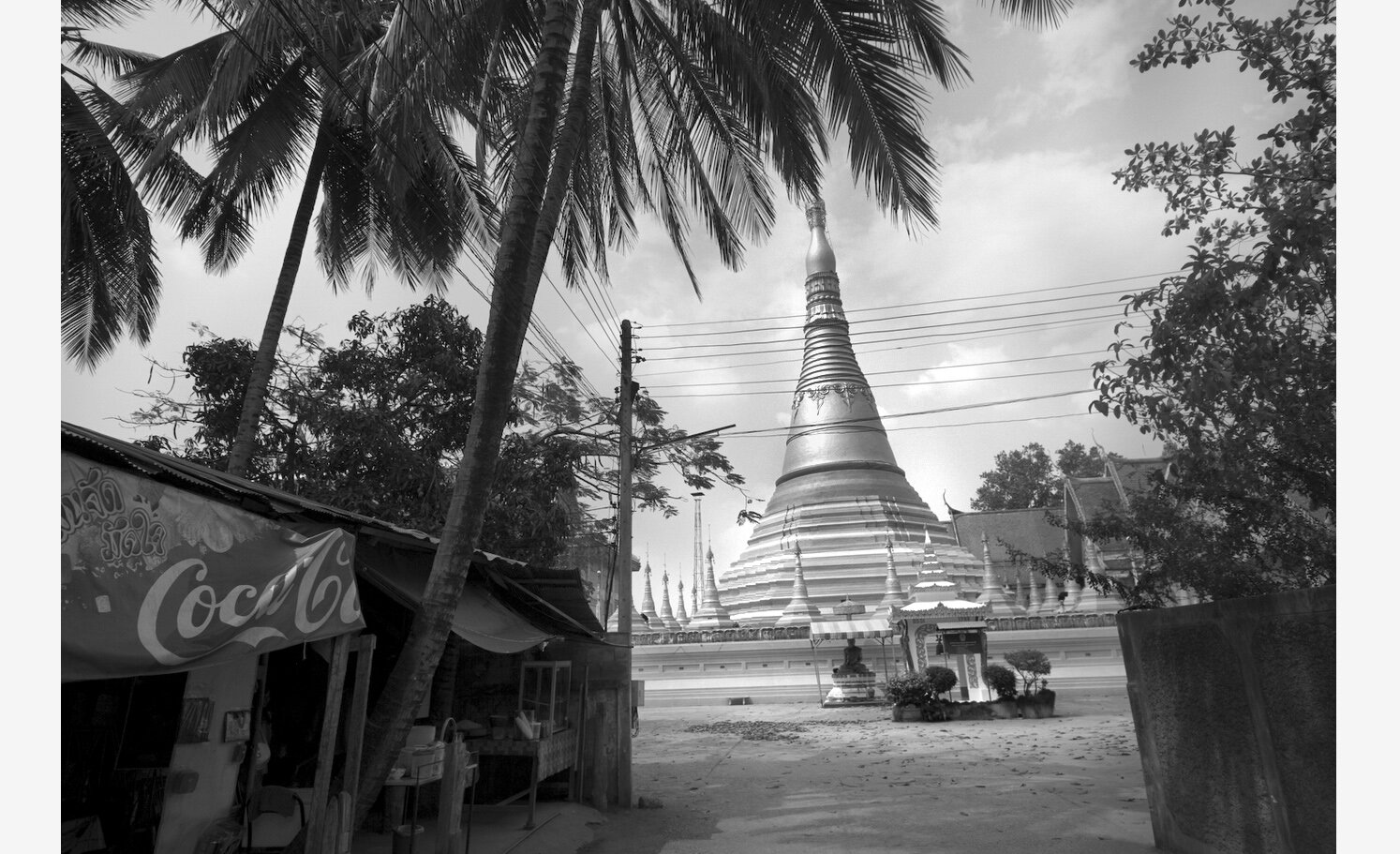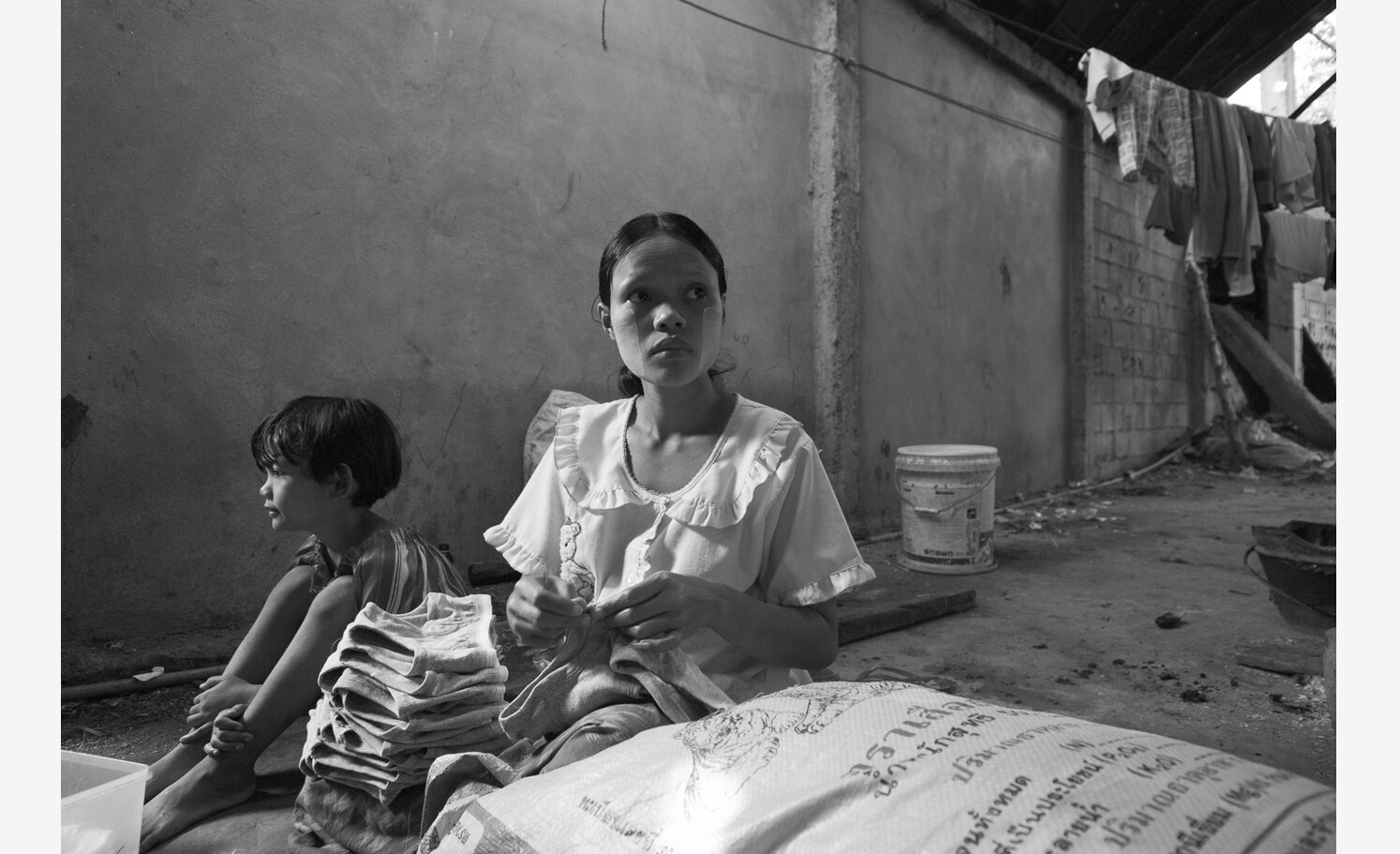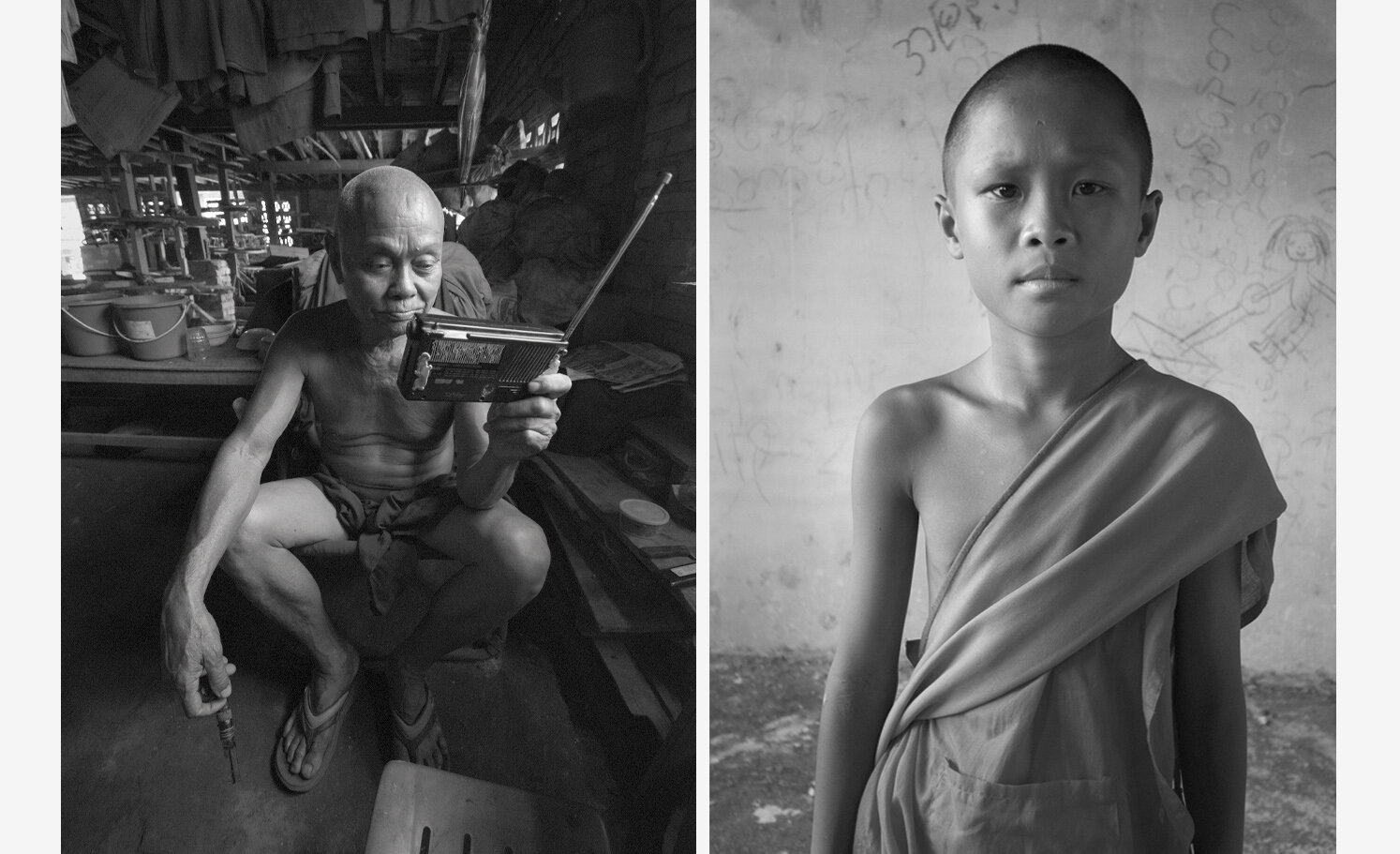"Camp Mae Sot" – Mae Sot, Thailand, Nov. 2010
Whatever it is, the way you tell your story online can make all the difference.
"Camp Mae Sot" (above)
The day after Myanmar's controversial national election in November 2010, an estimated 15,000 refugees from Myawaddy spilled across the Moei River border to escape an armed offensive between Myanmar's ruling military regime and the local Democratic Karen Buddhist Army (being one of many armed resistance groups within the region). Fearing they might add to the then roughly 150,000 Burmese refugees occupying nine official refugee camps along the Thai-Burma border (not pictured here), Thai authorities escorted the group to a military base near Mae Sot. After two days of overcrowding within the temporary camp, many chose to return home despite the hostilities.
Myanmar is officially home to 137 recognized ethnic minorities, among which the most populous are the Karén, Shan, Chin, Mon, Kachin, Karenni, and Rohingya. Some of these groups have their own standing armies and refer to themselves as ethnic nationalities in reference to their declared independence from Myanmar/Burma. Since the post-colonial era, Myanmar’s central government has been led almost exclusively by the Bamar or Burman people – the ethnic majority from which the name Burma was derived during the British colonial period, which ended in 1948. Both the recent military junta and its opposition leader, Aung San Suu Kyi are Bamar. Therefore, the ongoing "Karen Conflict" and other ethnically-based hostilities speak to the multiple layers of domestic conflict within the country.
The DKBA has in years passed been a regional ally of the central regime, which has brutally fought to maintain control over the eastern borderlands. The Karen militia are one of several, oftentimes competing, resistance groups whom maintain their own declared regional boundaries. These persistent conflicts and fracturing alliances have made the region historically a hotbed of violence and home to the modern era's longest running civil war, which officially continues to this day.
The last decade has also seen the political ascendency of Aung San Suu Kyi, who was held under house arrest for 10 years prior to leading the National League for Democracy (NLD) party and being elected to the position of head of state. In recent years, however, there have been numerous international calls for her 1991 Nobel Peace Prize to be rescinded due to her failure to adequately address the documented accounts of ethnic cleansing against Muslim Rohingyas by Burmese soldiers and monks espousing Buddhist nationalism. These events have largely occurred near the country’s opposite, western border with Bangladesh and are not represented in any of the three portfolios presented here.
Regional and area map of Southeast Asia and the Thai-Myanmar border.
The Border Crossing – Mae Sot, Thailand and Myawaddy, Myanmar
The Border Crossing (middle)
The Thai-Myanmar Friendship Bridge connects the small cities of Mae Sot and Myawaddy, while traversing the Moei River, which defines the national border throughout the region. Underneath this official, but scantily used connector exists a thriving black market on both sides of the river. Ferried by flat boats and inner tubes, basic commodities are purchased in Thailand, which are either unavailable or unaffordable in Myanmar; and crossing migrant workers from Myanmar (approximately 1.4 million) provide cheap labor throughout the entire Thai economy, including the sex-tourism industry. Spontaneous border inspections of cargo trucks and group taxis are common, but largely for the purpose to providing pay-outs to local, underpaid Thai police, who turn a blind eye. Local activists smuggle human rights abuse documentation out of Myanmar and pro-democracy materials in; while Burmese military informants similarly infiltrate and monitor the community abroad via the porous border. All of which, creates a general atmosphere of anxiety and distrust.
"Little Burma" (below)
Despite discrimination, exploitation, and economic hardships, many refugee families from Myanmar have established Mae Sot as their unofficial home in exile. These are in contrast to “legally recognized” refugees, defined according to international law and the UN's High Commissioner of Refugees (UNHCR). Sanctioned refugees reside within one of nine designated refugee camps. Those choosing or limited to living outside the camps consist of diverse regional ethnicities, including individuals from the capital region of Yangon – all of whom give sectors of the Thai city a decidedly non-Thai character. For the displaced, the community is a center where each have sought resiliency and freedom from persecution. The ill and injured are able to find low to no-cost healthcare provided by the non-profit Mae Tao Clinic; grassroots institutions provide education for children, many of whom have been orphaned; and a wide variety of cultural and political community-based organizations and international NGOs find a base for operations.
"Little Burma" – Mae Sot, Thailand





